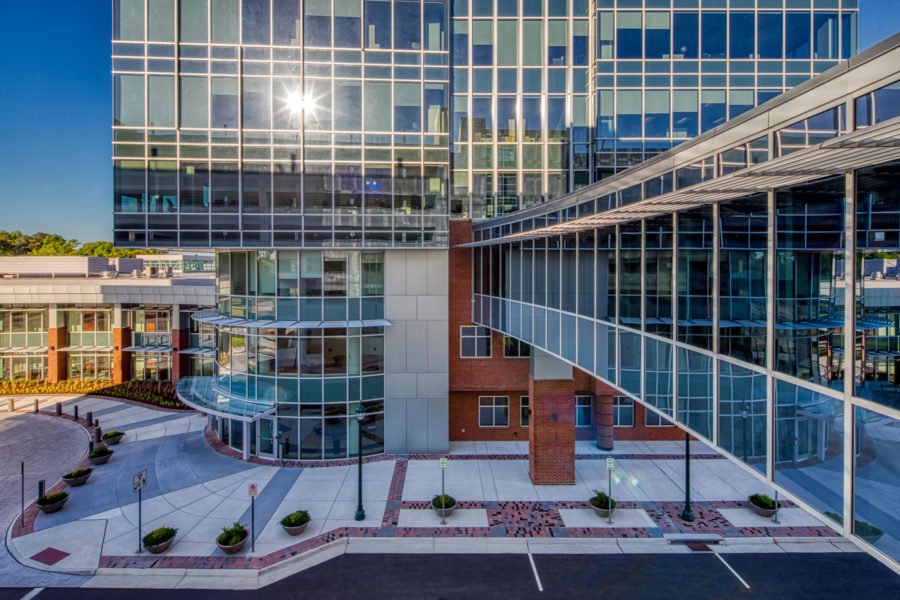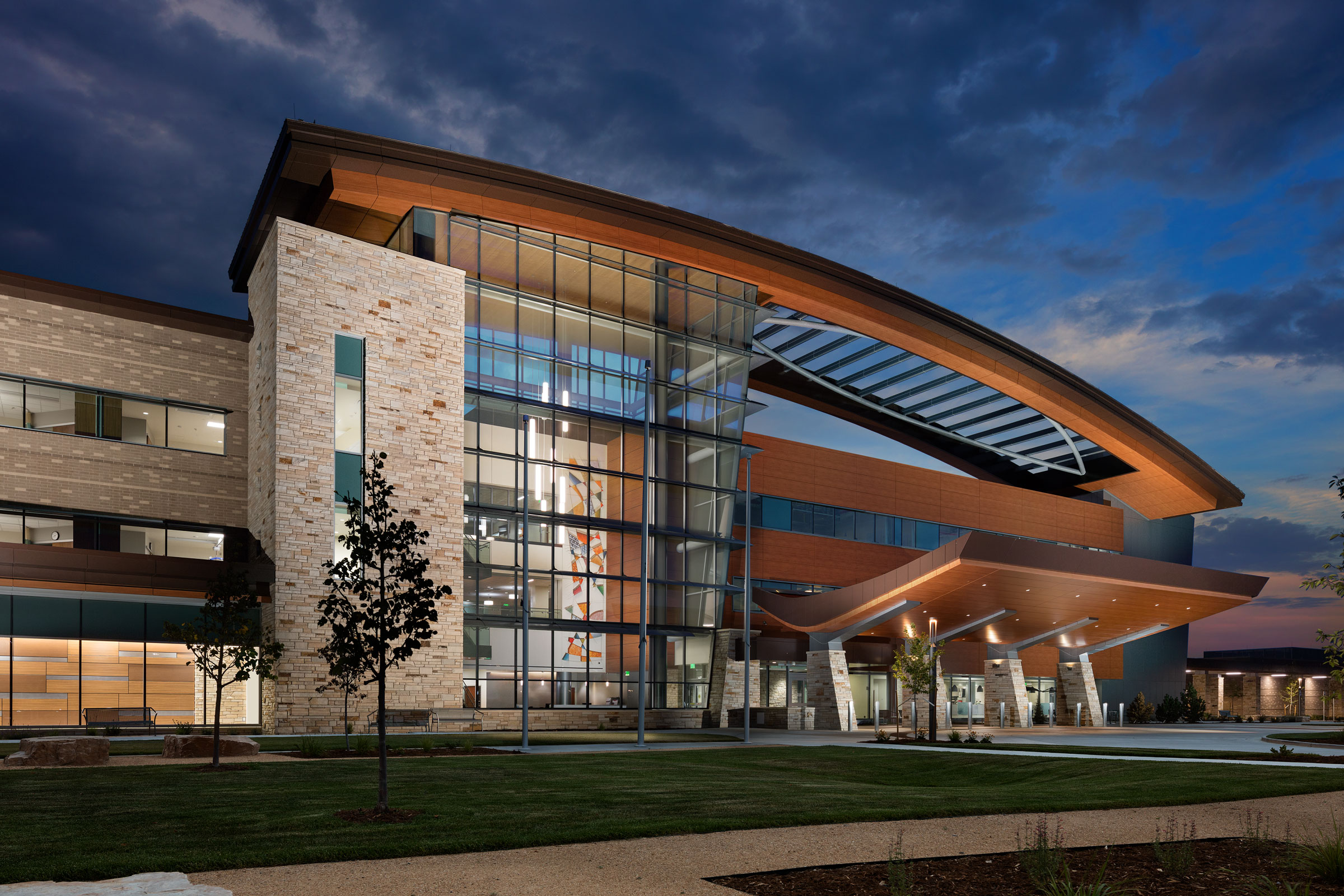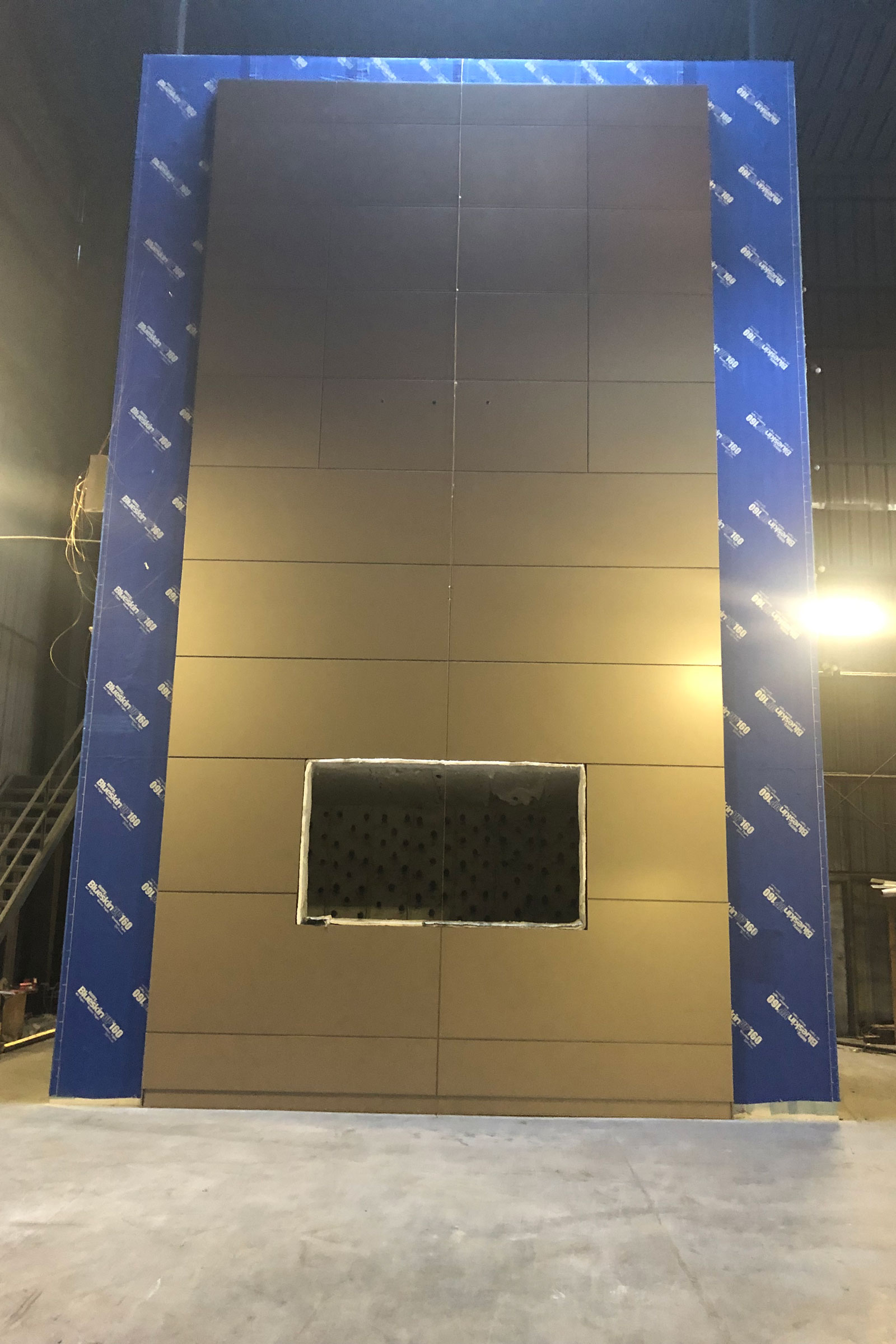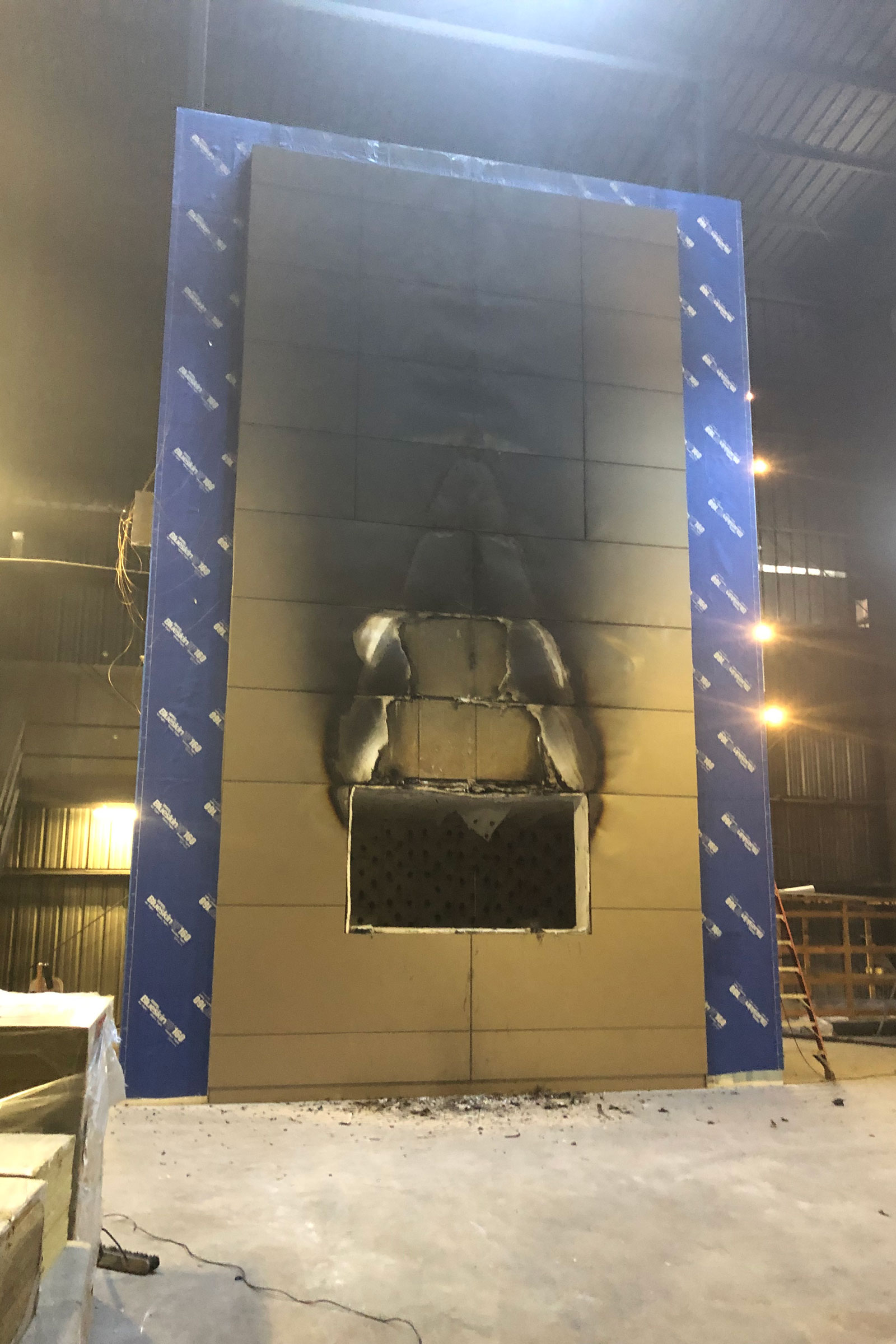Story at a glance:
- ALPOLIC answers the most frequently asked questions about fire code compliance and MCM.
- Composite metal wall panels are often among builders’ favorite building materials.
Seeking versatility, sustainability, and variety, architects and designers have sought out architectural cladding materials that can help them create better, more beautiful buildings. Engineering innovations like composite metal wall panels consistently rank at the top of the list of favorite building materials, with good reason. However, professionals across the construction industry rely on material manufacturers to help them navigate safety concerns.
Building codes can be intimidating. In particular, I get a lot of questions about fire safety. Our latest AIA CE presentation on building code fire requirements has been wildly popular. Many are just not familiar with the required testing that makes multi-story wall assemblies featuring composite cladding code-compliant.
What is MCM?

Metal composite materials (MCM) are seen here on this ALPOLIC project. Photo courtesy of ALPOLIC
Used on interiors and exteriors, skyscrapers and single-family homes, details, and entire building envelopes, this advanced cladding solution has been a favorite for design-build professionals the world over for the last 50 years. Metal composite materials (MCM) are most valued for their versatility. Easy to fabricate and install, available in nearly limitless colors and finishes, these innovative materials can make complex visions come to life.
Sustainable MCM is made from highly recyclable materials that support efforts in LEED certification. In as little as 1,000 square feet, affordable MCM can be produced to custom order with manageable lead times. These premium materials are ready to deliver exceptional results, with more than 100 finishes in stock. Quality composite panels can come with finish warranties of 10, 20, or 30 years and deliver the look, performance, and longevity every building owner deserves.
The standard product features metal skins 0.5mm (0.02″) thick. Heavy-duty 0.8mm (0.32″) skins are also available. The finished product is offered in thicknesses of 3mm, 4mm, or 6mm, with 4mm being the architectural standard. Standard panel dimensions are 50” or 62” (127cm or 157cm) wide and 146” or 196” (371cm or 498cm) long, with custom sizes also available.
MCM is produced by bonding thin sheets of metal to either side of a thermoplastic core with heat and pressure. It provides the rigidity of plate metal without the weight or the distortion commonly referred to as oil-canning. Typically made with painted or treated aluminum, also known as ACM, MCM are also produced with zinc, copper, stainless steel and titanium, often referred to as natural metals. The thermoplastic core can be a traditional polyethylene (PE) or fire-resistant (FR).
What’s the difference between PE and FR core?
The different cores provide the same variety of attractive finishes, structural performance benefits, and come in the same dimensions. Visually a glossy black, PE core is about two-thirds the weight of FR and often a lighter gray color. Both are rated Class A under the ASTM E84 (Standard Test Method for Surface Burning Characteristics of Building Materials) in the US and in Canada under the CAN/ULC-S102 (Standard Method of Test for Surface Burning Characteristics of Building Materials and Assemblies).
PE has been used for decades and is still the preference for many in applications like signage and quick-service restaurants, but only FR is used to pass testing required of buildings several stories in height. FR material has been used as a component in a variety of wall assemblies that have successfully passed the American NFPA 285 (Standard Fire Test Method for Evaluation of Fire Propagation Characteristics of Exterior Wall Assemblies Containing Combustible Components) and the Canadian ULC-S134 (Standard Method of Fire Test of Exterior Wall Assemblies). For this reason, FR core material is recommended when applied over 40 foot from grade.
What are the NFPA 285 and ULC-S134?
- Photo courtesy of ALPOLIC
- Photo courtesy of ALPOLIC
- Photo courtesy of ALPOLIC
Both the US and Canada have similar full-scale wall assembly tests. However, it is important to understand that these different national systems are not compatible with, nor interchangeable with, each other.
In the US, the ICC uses the NFPA 285 to evaluate the fire propagation characteristics of post-flashover fires of interior origin. The basic purpose is to ensure a fire can’t “leapfrog” up the building skin, re-entering the building at a higher point than the floor where it originated.
NFPA 285 is a multi-story test procedure, requiring a two-story wall to be built in the test lab. A rectangular hole is punched through the wall near the bottom, representing a window that has been breached by the fire. Burners are ignited at the bottom of the window, and the fire is observed over a period of 30 minutes to ensure it never reaches a height of 10 feet over the window. Temperature measurements are also taken to ensure the fire never exceeds 1,000 degrees Fahrenheit at a height of 10 feet over the window.
NFPA 285 is a test of the entire wall assembly—from inside air to outside air. Similarly, in Canada the ULC S134 is used to evaluate the fire performance and burning characteristics of an exterior wall with controlled fire exposure. The test measures the fire spread over the cladding, heat flow from a controlled fire to the exterior wall, and the fire spread within the wall assembly. The S134 is important for successfully building to the National Building Code (NBC) of Canada standards. Though it should not be considered a stand in for expected performance in all real-world fire conditions. Limited to the exterior wall alone, it does not evaluate framing details, the possible migration of fire to the interior wall, or the structural capacity of the exterior wall.
The S134, an independently certified test, provides an unbiased, standardized baseline for fire safety in Canadian cladding systems. The test wall assembly is 6 meters (19’8”) wide and 9.8 meters (32’2”) tall constructed over a concrete base, so only the exterior wall flame spread is visible. At the bottom of the test wall is a furnace that is used to simulate a fire exiting a window and climbing up a building. The focus is on flame spread and temperature, with heat flux measured using three sensors on the wall.
It is important to note that both these tests are of the wall assembly. A single component can be responsible for a failed test. That’s why responsible manufacturers have tested, and continue to test, a variety of wall configurations as the need arises. We’ve performed successful NFPA 285 and ULC S134 tests with a variety of air/water barriers, insulation materials and even composites faced with different metals than aluminum, such as copper-skinned metal composite materials.
Keep in mind, the test does evolve over the years. The standards are developed and published by independent nonprofit organizations focused on all aspects of safety in North America. Since the tests came out decades ago, they have been reviewed and updated. I recommend asking for a test that meets current requirements.
When you review the code, the ICC and NBC require any MCM wall assembly systems to pass the NFPA 285 or S134 respectively. It’s part of the provision for exterior, non-load-bearing cladding systems that incorporate combustible components to be used in structures otherwise required to be of non-combustible construction.
How do you know if a material is non-combustible?
Defining what is non-combustible is a matter of setting the conditions under which flaming does not occur. In the US, the ICC test for combustibility is ASTM E 136 (Standard Test method for Assessing Combustibility of Materials Using a Vertical Tube Furnace at 750°C.) In Canada, the NBC test for combustibility is CAN/ULC S114 (Standard Method of Test for Determination of Non-Combustibility in Building Materials).
These tests subject a sample of the material to a specific heat, for a specific time and sets specific limits for flaming, mass loss and temperature rise. If the sample passes these conditions, that material is considered non-combustible. If the final product is a composite (like MCM), all materials must be tested separately (core, skin and, if used, adhesive) and pass to be considered non-combustible.
If a material (or any of its components) does not meet the requirements of the ASTM E136 or the ULC S114, then the ICC or NBC may set other criteria for a material’s use in non-combustible construction. For MCMs, those requirements can include full scale testing for multi-story applications.
Is your building material tested to the latest industry standard?
Build safety is critical for all facets of the design-build community. Follow the code. When it comes to fire safety, the code is clear, and wall assembly tests like the S134 support code compliance efforts for the Canadian market. When you’re writing a spec or designing a wall, make sure your materials and wall assembly have up to date testing. Don’t accept anything less than strict code compliance.
Still have questions?
The technical services department at your MCM manufacturer is ready to answer them. Navigating questions on specifications, like how do I choose the right installation system, or more project-specific questions, professionals like me are ready to help. Choosing the right material is a necessity for code-compliance and critical for safety. Request the most up-to-date testing reports and ask questions. We want to help design-build professionals find the best solution for their needs.
Industry experts are just a phone call away. Manage tight lead times with responsive customer support, order free samples and literature for your design board, and reach out to the manufacturer’s technical service team to get reports like the Environmental Product Declaration (EPD), Product Transparency Declaration (PTD), and NFPA 285 or S134 Summary Test Reports. Find a support team that is standing by for your toughest questions.
Building design comes with several design challenges and considerations. Of them, safety should always be top of mind. Build better with safe and beautiful metal composite materials that offer an adaptable, sustainable, and cost-effective solution. Exceptional projects demand exceptional materials. Design your next project with the help of premium ALPOLIC MCM. Request samples today.





